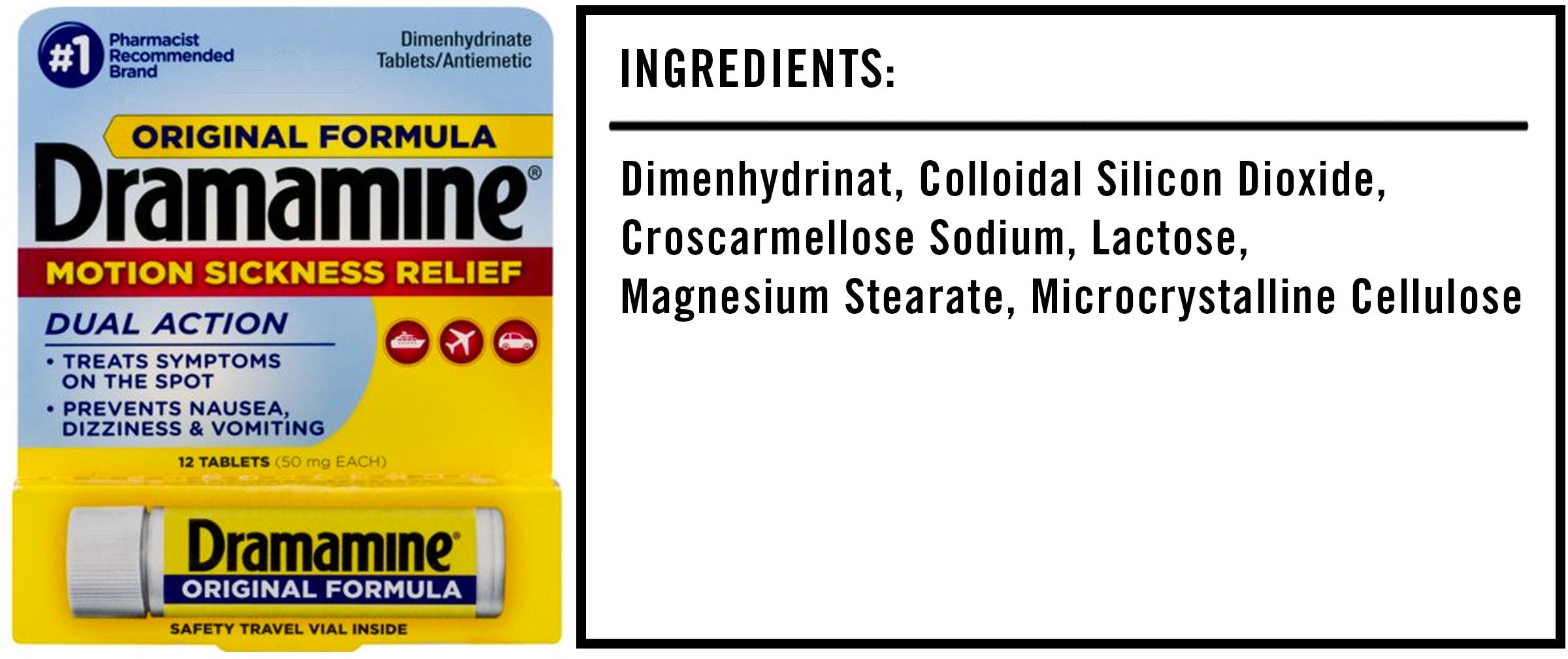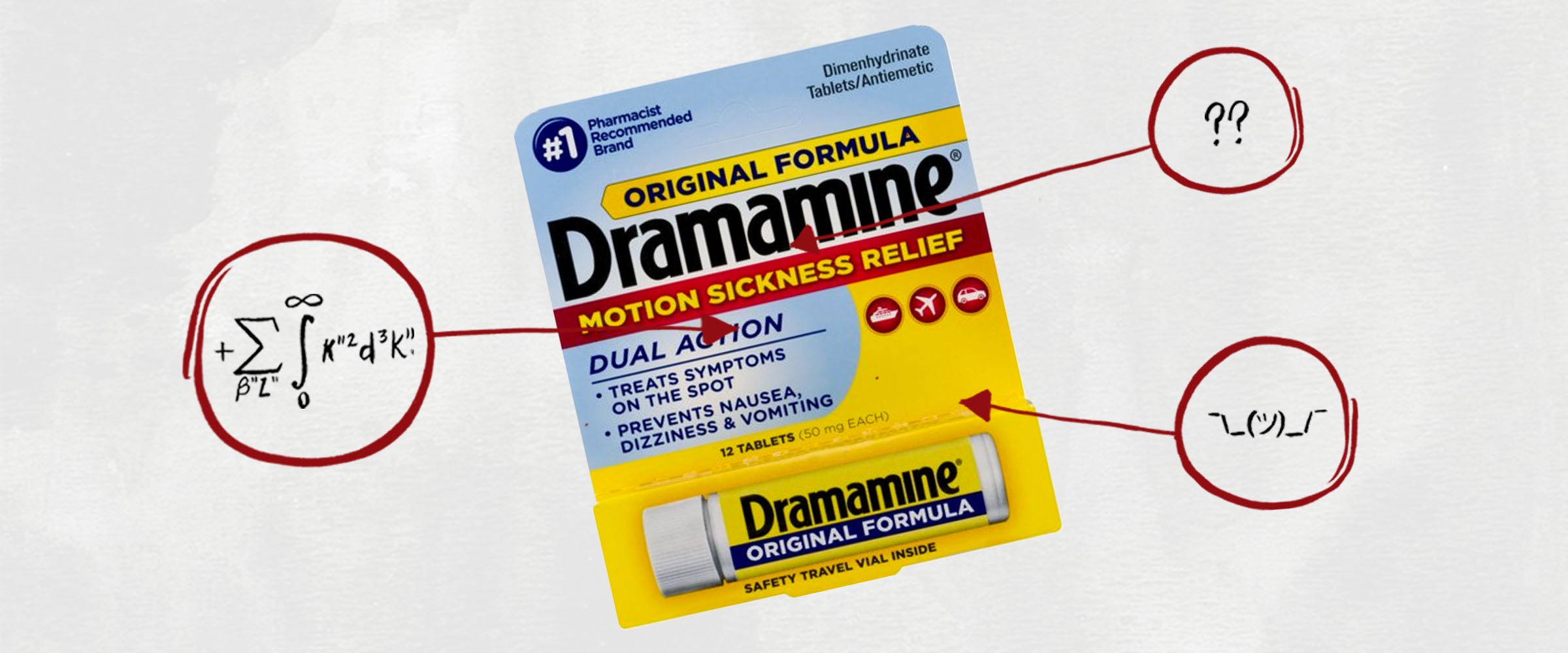We’re often told that you should never eat anything (or put anything on your body) if you don’t recognize everything on the ingredients list. But since most of us have no idea what xanthan gum or potassium benzoate are — or more importantly, what they’re doing to our bodies — we’re decoding the ingredients in the many things Americans put in (and on) themselves with the help of an expert.
This edition: Dramamine, which is made from six separate ingredients that we’ve broken down in the exact order they appear on the CVS website.

The Ingredients
1) Dimenhydrinate: Dimenhydrinate is the only active ingredient in Dramamine. It works as an antihistamine, reducing the effects of the natural chemical histamine in the body. That might sound surprising, but it’s important to understand that motion sickness happens when our central nervous system receives conflicting messages from our senses — our vision, our sense of touch and our inner ears. These inconsistent cues provoke a release of histamine (which is part of the body’s immune response, and aims to help your body expel potential bodily annoyances through whatever means possible, even puking your brains out), triggering areas in the brain that can cause nausea, vomiting and dizziness. Antihistamines like dimenhydrinate also seem to desensitize the inner ear to motion, which should obviously help prevent motion sickness.
Dimenhydrinate is fine to take for the occasional bout of motion sickness, but as with most medications, taking Dramamine with alcohol can result in drowsiness and dizziness, or probably the opposite of what you want when puking from the side of a large boat.
2) Colloidal Silicon Dioxide: Silicon dioxide can be found in nature in the form of sand or quartz. In pharmaceuticals, silicon dioxide, also known as colloidal silicon dioxide, has several uses in tablet-making — as an anti-caking agent, adsorbent, disintegrant or glidant, which allows powder to flow freely when tablets are processed, helping ensure that each individual tablet, when placed into the tablet press, comes out uniform in size and contents. This ingredient is also generally recognized as safe by the FDA.
3) Croscarmellose Sodium: Commonly used in pharmaceutical manufacturing as a disintegrant, croscarmellose sodium helps tablets breakup in the intestinal tract, guaranteeing that the active ingredient is fully absorbed and the medication is effective. Like colloidal silicon dioxide, croscarmellose sodium is approved by the FDA when used in standard amounts.
4) Lactose: A sugar found in milk, in the pharmaceutical industry, lactose is used to form tablets, since it can help the various ingredients be compressed easily. While most medications don’t contain enough of the ingredient to aggravate lactose intolerance, those with the most severe cases might want to avoid these medications altogether.
5) Magnesium Stearate: Magnesium stearate is a fine white powder frequently used as a release agent, meaning it prevents the various individual ingredients in these tablets from sticking to each other (and the machines) during production.
6) Microcrystalline Cellulose: Another common tablet-making ingredient, microcrystalline cellulose is also known as refined wood pulp, which makes up the casing for these tablets.
The Takeaway
Dramamine does what it says, and not much more, which is really all you can ask for from a medication. So pop one in and hop on the boat, buddy — just hold off on the boat beers for a couple hours.

